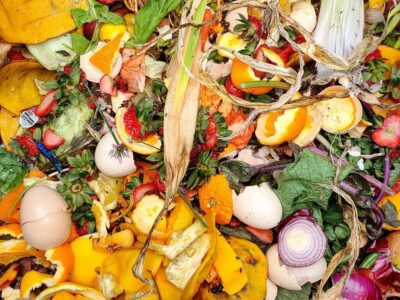
Sustainability Management alumna Marisa Hanson (’14) has gone from working on a capstone workshop project to design a national building retrofit program for Montenegro to a role as program specialist for a residential energy efficiency program in Santa Barbara, CA. Marisa has focused her sustainability career on making a significant difference on a local level.
1. What is your current job?
I am currently working as a Program Specialist for emPower Central Coast. It is a residential energy efficiency program run by the County of Santa Barbara in California. The more external aspects of my job include community outreach, event planning, and customer and contractor relations. Internally, I work on data management, some financial and grant reporting and program development. We are a small group with big goals, so I really like that I have the opportunity to contribute in a significant way within many different areas of the program.
2. Do your current job responsibilities align with the professional goals that you originally had when you began the MSSM program?
My idea of how I would apply my degree after graduation changed pretty drastically throughout my time in the MSSM program. I have always been very data driven, so I figured that showing with numbers how or why a sustainability initiative was successful would be sufficient. I learned very quickly though, that numbers alone are not enough. “Sustainability” still has very emotional and political implications that must be recognized, which is why stakeholder buy-in is essential. Every stakeholder has different priorities, so being able to frame a sustainability issue taking as many priorities into consideration as possible is key to attaining the support you need for a project to be successful. In that sense, my current job responsibilities include a lot more outreach and interaction with decision makers, program partners, and customers than I had originally envisioned.
3. What skills or experiences throughout your time in the MSSM program have proven useful to your current position?
Aside from the hard skills that I came away with such as LEED GA credentials, practical statistical analyses, and l financial management, there were the soft skills and a general holistic view that is engrained in the program design that have been really beneficial.
But by far, the experience most beneficial to my current position was my Capstone project. I worked on a team tasked with designing a national building retrofit program for Montenegro. We learned that designing a program that cuts across so many different sectors can present quite a few obstacles. I encounter many of those obstacles in my job every day, and having gone through it during Capstone really prepared me for having to deal with them professionally.
4. What skills and tools do you hope to acquire through this job?
I decided during my time in the program that I really wanted my career to be based on trying to make a significant difference on a local level. I went the city/county government route because I thought it would be a great way to learn program management and design for the types of sustainability initiatives I am interested in.
5. How has collaborating with your fellow students in class projects benefitted you professionally and personally?
For me, the heavy emphasis on group projects was a really essential component of the program. The incredibly diverse backgrounds and expertise of students in the program made for interesting and varied input on every project that I think really benefitted me personally. That said, it could also often be a challenge coordinating schedules and reconciling different opinions and points of view. As a sustainability professional, I now find myself collaborating with groups who all have differing areas of expertise and conflicting priorities, so working with them is kind of an extension of those group projects, just on a much larger scale.
6. What kinds of environmental initiatives do you hope to start in your new position?
The program I am working on is currently only focused on single-family residential energy efficiency. I would really like to help the program expand to include multi-family and commercial buildings, as well as water efficiency initiatives in this drought-stricken region.
I’ve also noticed lots of opportunities for the County to improve its sustainability right in its own buildings, so hopefully I’ll have some secondary projects in the works soon.
7. How do you intend to utilize your degree from the MSSM program to further your career?
I’ve already been able to use it to jump into the career field I was interested in joining. Going forward though, I think having earned my degree during the early phase of the sustainability movement will be helpful in my career as I progress. And if I ever decide to switch directions in the sustainability field, I have no doubt that the holistic design of the program will have given me the ability to do so.
The M.S. in Sustainability Management, co-sponsored by the Earth Institute and Columbia’s School of Continuing Education, trains students to tackle complex and pressing environmental and managerial challenges. The program requires the successful completion of 36 credit points. Those credit points are divided among five comprehensive content areas: integrative sustainability management, economics and quantitative analysis, the physical dimensions of sustainability, the public policy environment of sustainability management, and general and financial management. Visit our website to learn more.



